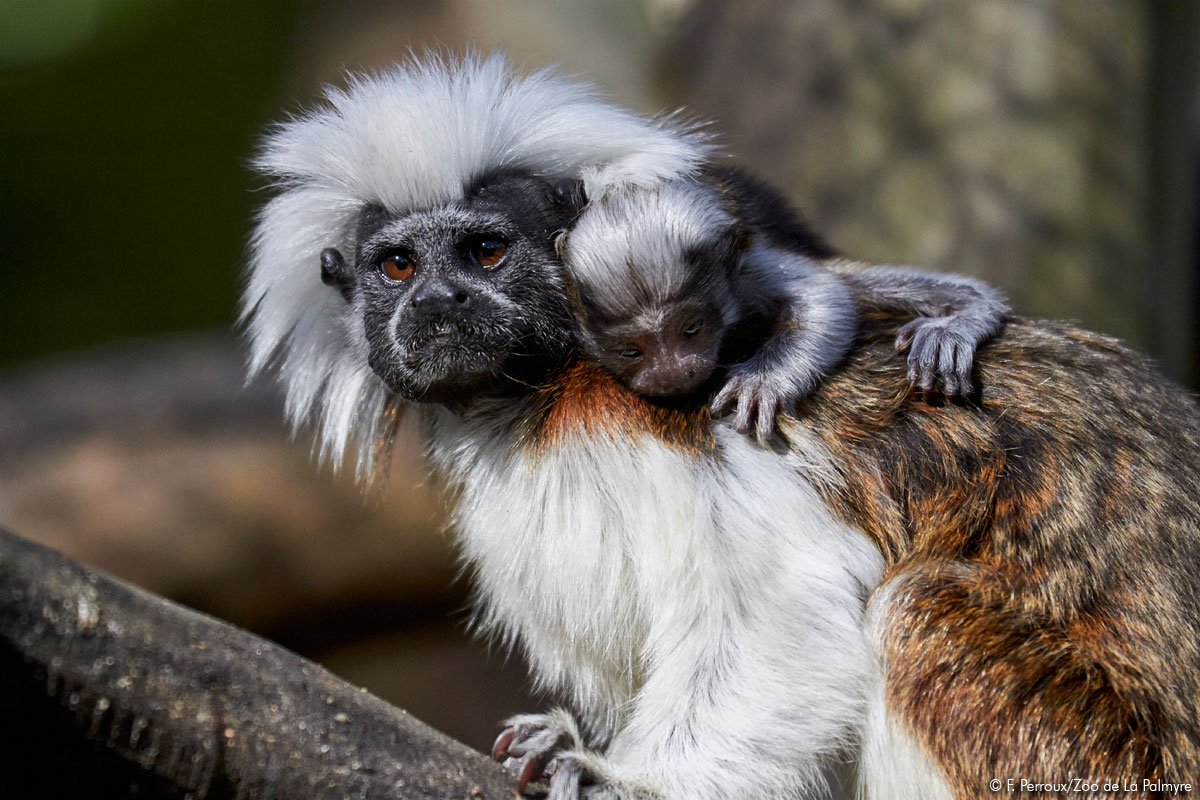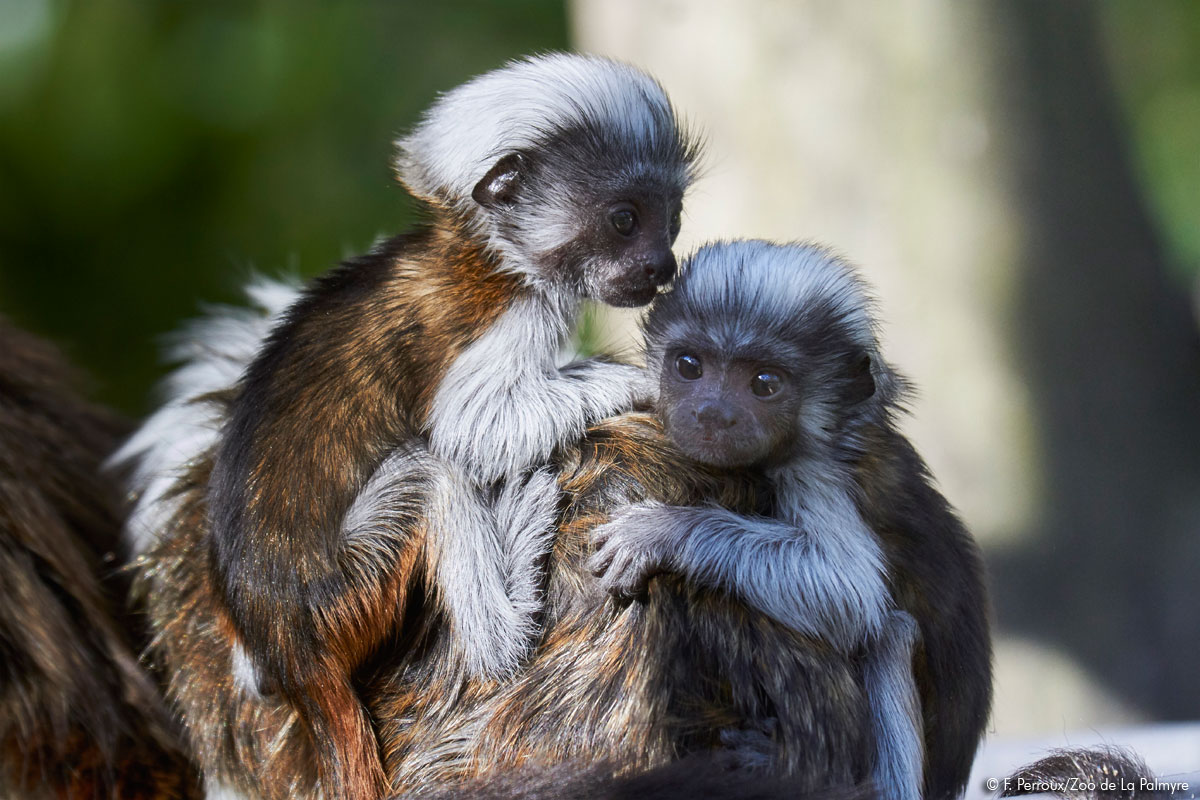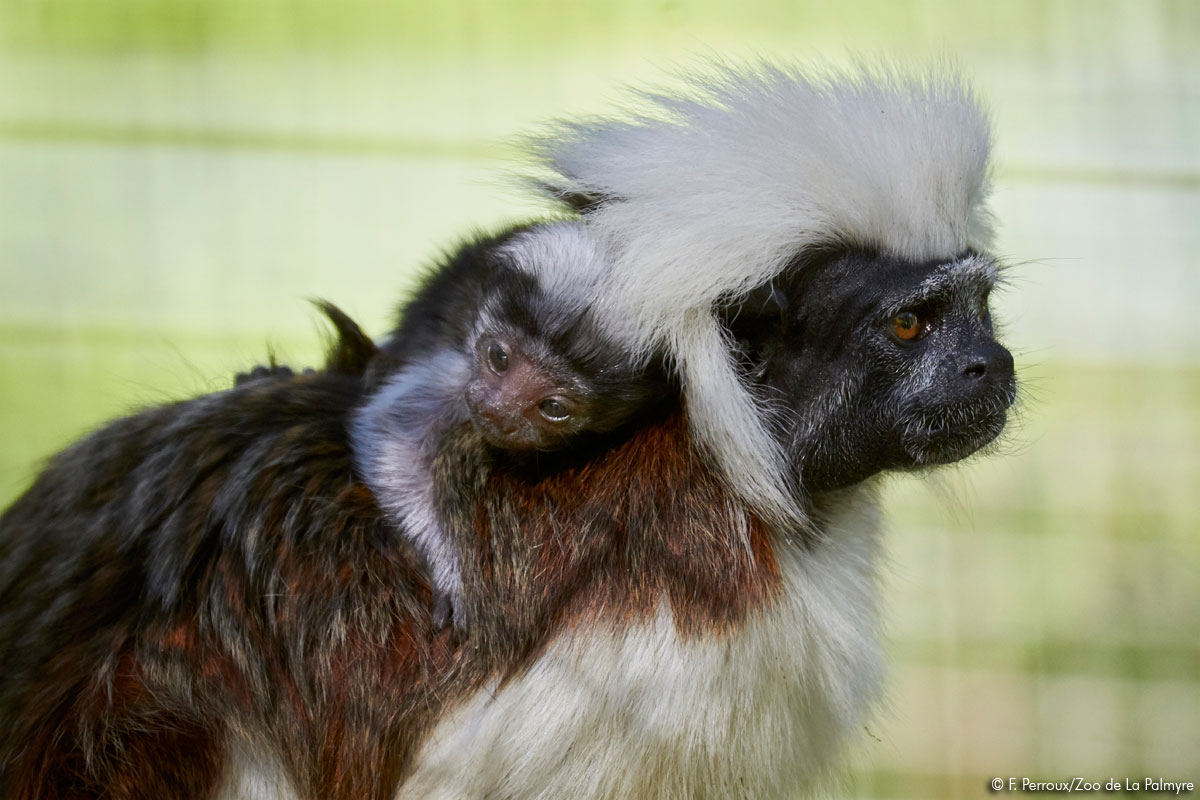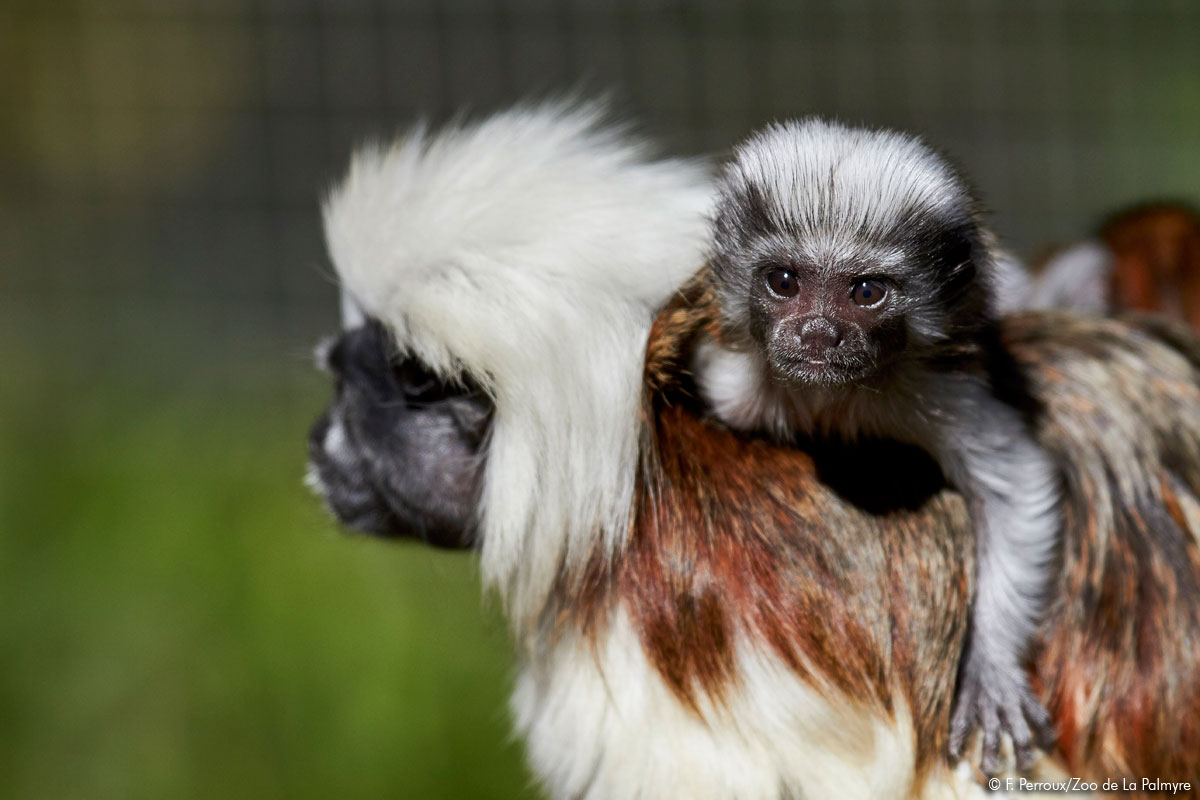Cotton-top Tamarin twins born at La Palmyre Zoo

At one month old, our Cotton-top tamarin (Saguinus oedipus) twins are just beginning to venture on the tree trunks of their enclosure! This is the second successful litter for female Tamara after she gave birth to a first pair in February last year.


Arboreal and diurnal, cotton-top tamarins live in small family groups of about 10 individuals. They spend most of their day foraging for food consisting mainly of fruits, gum, nectar and insects. Females usually give birth to twins once a year after a gestation period of 6 months. All the group members care for the babies, carrying them alternatively on their backs.
With the mane of white hair surrounding its head, the Cotton-top tamarin can easily be distinguished from other tamarin and marmoset species. But its cute face shouldn’t lead us to forget that this is one of the most endangered primates of Colombia. Classified as Critically Endangered, this endemic species is threatened by massive deforestation and captures for the illegal pet trade. The IUCN foresees a potential population reduction of 80% or more in the years to come.
Despite those pessimistic projections, the Proyecto Títí in Colombia has been working on preserving the Cotton-top tamarins and reducing the threats to their population for years. Our conservation partner tries to decrease the pressure on the habitat by restoring the forest cover on former agricultural land: they collect the seeds of tree species used by the tamarins, germinate them within their tree nursery and plant the seedlings on areas owned by local farmers who have agreed to dedicate part of their land to the creation of forest corridors.
The Proyecto Títí is also developing a dynamic awareness program for the local communities by involving children and adults in educational, artistic and fun activities.

